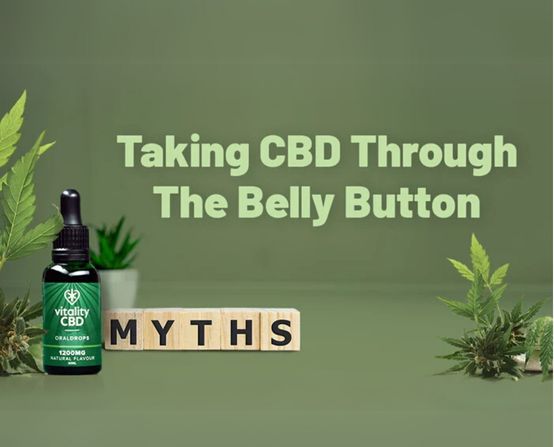Cannabidiol’s rapid rise into the public sphere has been driven by its popularity as a well-being ingredient and you can now find products containing cannabidiol across the UK.
Cannabidiol Oil (CBD Oil)
Cannabidiol oil, or CBD oil, is the most popular way to take cannabidiol. Cannabidiol oils come in a variety of flavours and are taken sublingually (held under the tongue until absorbed). You can find cannabidiol in a variety of products besides oils, including cannabidiol vape juices, balms and even cosmetics.
It's important to note that Cannabidiol will not get you high, even in large doses. THC, a separate compound found in cannabis, causes the high associated with smoking the plant. Luckily, cannabidiol can be extracted separately from THC and products you buy in the UK should contain 0.0% THC.
Is Cannabidiol Legal in the UK?
Cannabidiol oils and other products are legal in the UK as long as they are sold according to MHRA guidelines. For any cannabidiol to be legal in the UK, it must be made from hemp with less than 0.2% THC content; THC being the molecule responsible for the intoxicating effects of cannabis.

Cannabidiol Name Origins
The root of the word cannabidiol does, in fact, come from Cannabis, a genus of flowering plants known primarily for their recreational use—namely the psychotropic effects. However, cannabis itself is just a broad classification, much like how the genus Rosa covers over 300 different species of rose. In the case of cannabis, there are two primary species: Cannabis sativa, and Cannabis indica.
Even if you’ve not heard of this divide, it’s likely you’ll have seen two other key pieces of terminology: hemp and marijuana.
- Hemp is a subset of Cannabis sativa, which is primarily used for industrial purposes, as in paper, rope, textiles and biofuels.
- Marijuana refers to plants grown for recreational purposes, hence why people use the term when referring to drugs.
For our purposes, the most significant difference found between strains of cannabis is the balance of tetrahydrocannabinol, or THC, the primary psychotropic ingredient, and cannabidiol, or CBD, which has no psychotropic properties.
If you look into the background of any given CBD product, it’s highly likely it was harvested from a specially cultivated strain of hemp, bred to maximise the CBD and minimise the THC. At Vitality CBD, that’s why all our CBD e-liquids, CBD edibles, CBD oils and CBD topicals contain 0.0% THC.
What are Cannabinoids?
Cannabinoids are a type of molecule found in the cannabis plant. Despite their differences, THC and CBD both fall into the classification of cannabinoid, a type of chemical compound first discovered in cannabis, hence the naming convention. In fact, 113 distinct phytocannabinoids (a cannabinoid synthesised by a plant) have been discovered so far within the hemp plant, though THC and CBD are far and away the most prevalent ones.

Even though the cannabinoid classification was first discovered within the cannabis plant, they actually exist throughout many other biological systems, including our own. An endocannabinoid is a cannabinoid produced within the human body, in a system aptly named the endocannabinoid system (ECS) that was only discovered several decades after cannabidiol was identified.
The Endocannabinoid System and CBD
But why does any of this matter for a CBD user? Well, the discovery of the endocannabinoid system gave us a much better understanding of how THC and cannabidiol interact with our biological framework, revealing that they both act as analogs for a pre-existing cannabinoid within our own body (anandamide for THC, and 2-AG for CBD).
This means that these phytocannabinoids aren’t foreign; they’re similar to cannabinoids the body produces by itself. Whether you take cannabidiol by using CBD vape oils, putting CBD drops under your tongue, or even using externally applied CBD cream, cannabidiol can be safely integrated into the body.
Working Together to Understand CBD
Cannabidiol usage and the motives for doing so differ from person to person, but through a better understanding of how it interacts with the body, we believe each user can engage with cannabidiol more effectively. An informed choice is always best!















Leave a comment
All comments are moderated before being published.
This site is protected by hCaptcha and the hCaptcha Privacy Policy and Terms of Service apply.